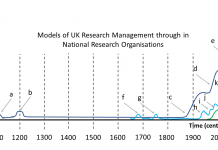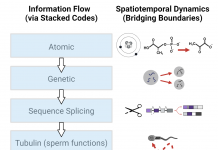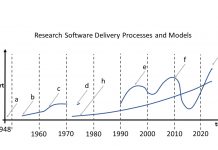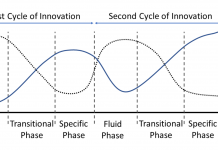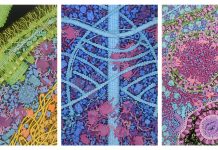Home 2024
Archives
Do research software engineers have research methods?
Dr Joanna Leng, School of Computing, University of Leeds, Dr Phillip Brooker, School of Sociology, University of Liverpool and Emeritus Prof Wes Sharrock, School of Sociology, University of Manchester, all from the UK, ponder if Research Software Engineers have research methods, plus why today, we have increasingly more types of academic research institutions and organisations.
The role of stacked codes in the digital age
Chris Girard from Florida International University, sheds light on how, in the digital age, stacked genetic, computer, and quantum codes are being edited by university-trained experts.
Computing: Paradigm shifts, adoption, new digital professionals rising
Dr Joanna Leng, School of Computing, University of Leeds, UK and Dr Phillip Brooker, School of Sociology, University of Liverpool, Emeritus and Prof Wes Sharrock, School of Sociology, University of Manchester, focus on computing: paradigm shifts, charting the adoption and the rise of new digital professions.
FFEA software: Repeated early innovation
Dr Joanna Leng, Senior Research Software Engineering Fellow at the University of Leeds, discusses software with repeated early innovation using the example of the FFEA software.
Computational biology is poised to advance precision medicine with machine learning
Today, scientists are attempting to model whole cells using computational biology, building virtual cells that capture the dynamics of living.
Applications of discrete computation in paleoclimate systems
In this earth climate system focus, Michael R. Gipp, Acting President from Marine Mining Corp, details the applications of discrete computation in paleoclimate systems.
Supporting ICT employment opportunities for women in Egypt
Ragui Assaad and Irene Selwaness examine the increase of women in ICT jobs in Egypt, as well as gender disparities and the efforts to promote ICT employment growth.
The development of research software engineering as a profession
Dr Joanna Leng at the School of Computing explores Research Software Engineering (RSE) as an emerging profession, and how computing technology is core to many professions.
Discussing early innovation software by example of the PERPL software
Dr Joanna Leng, School of Computing, University of Leeds, UK, presents a project from the fellowship, on the PERPL (pattern extraction from relative positions of localisations) software which analyses super-resolution light microscopy (SRLM) data.


